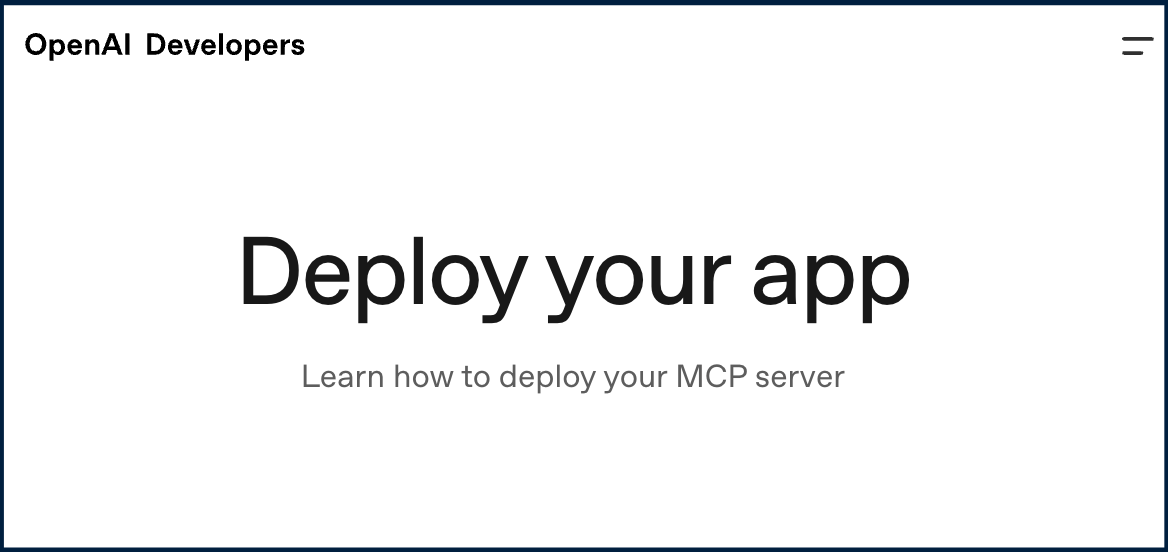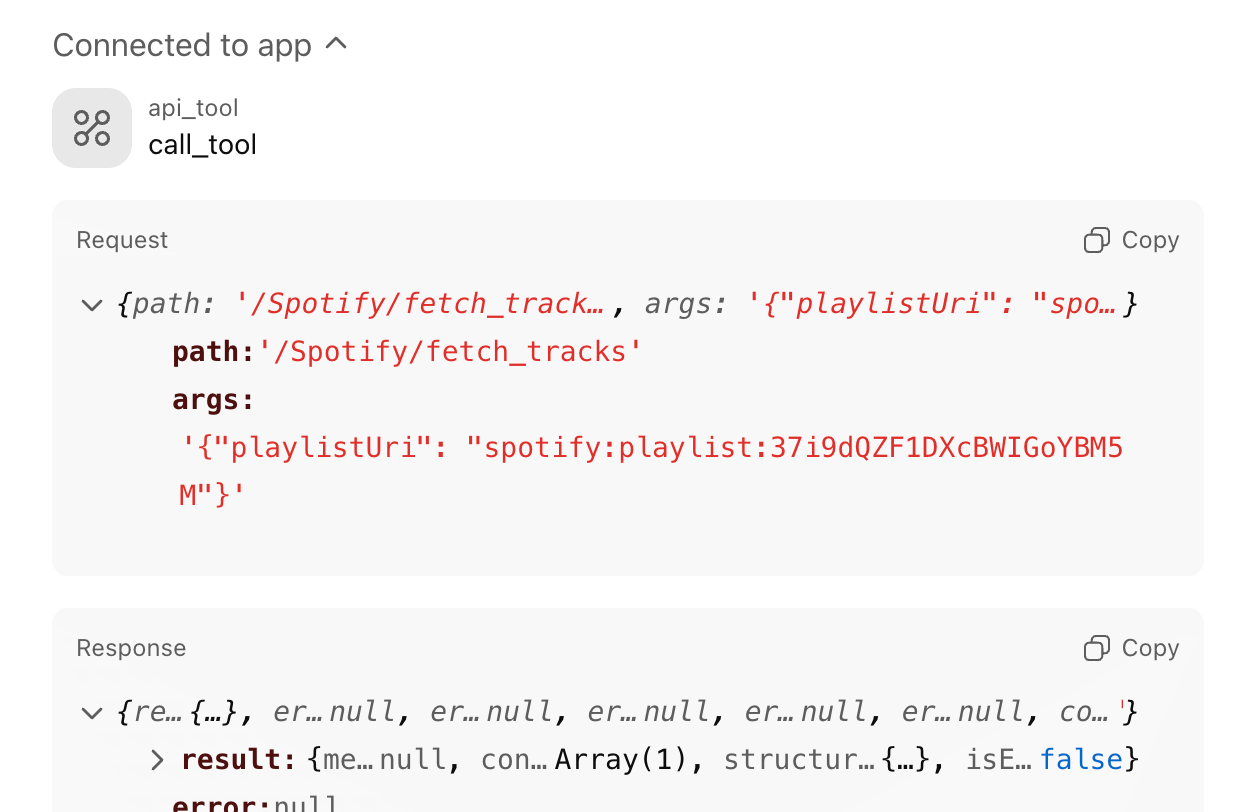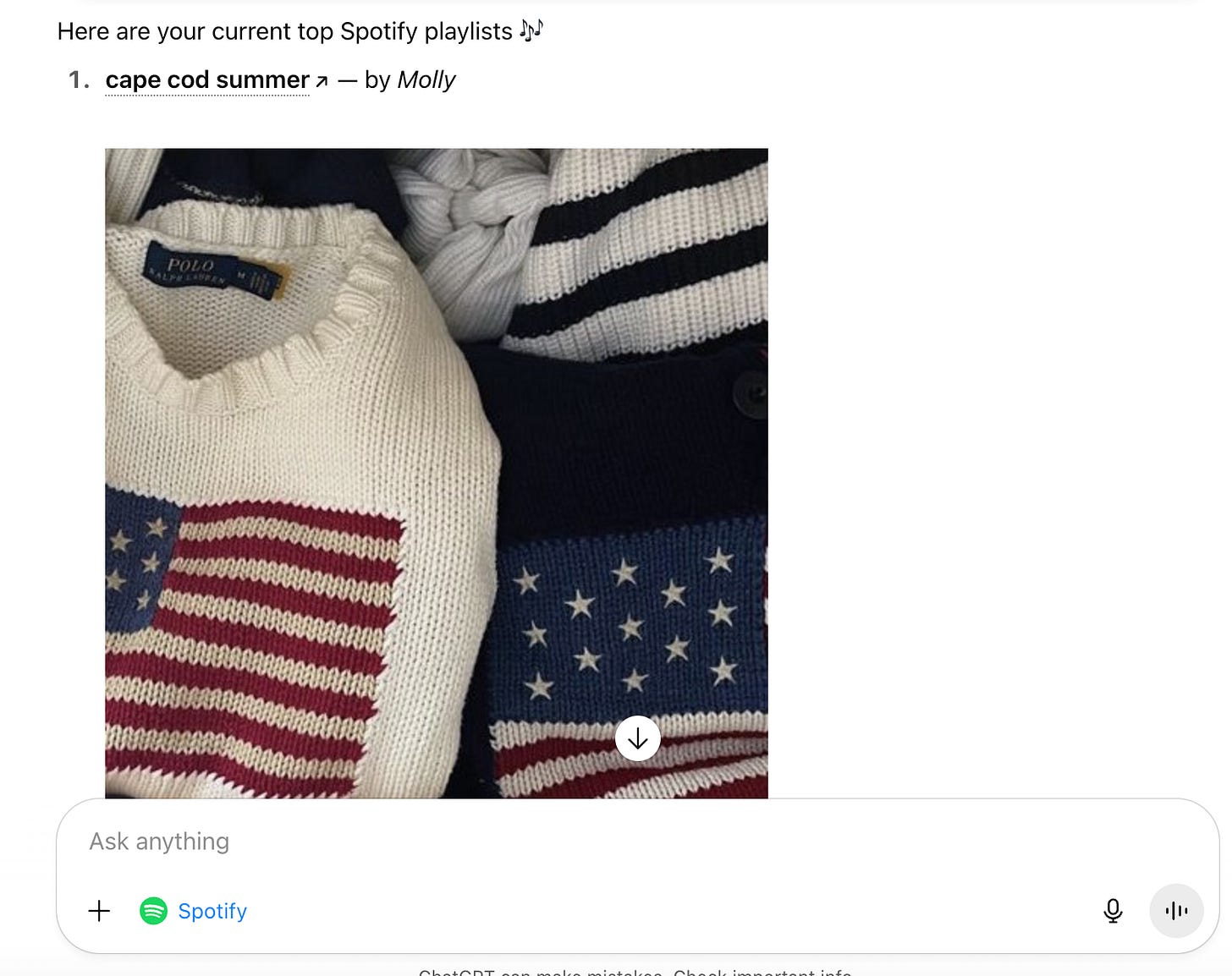OpenAI Apps: MCP's Re-Re-Brand
The tech isn’t new, but the positioning is. A closer look at OpenAI’s “Apps” launch and what it signals for the future of MCP servers.
MCP Servers at a Plateau
For a while, MCP servers were all anyone in the developer community could talk about. Over time, though, the hype cooled.
Software engineers and MCP enthusiasts like me experimented with MCP Servers (aka ‘Connectors’), but most consumers used them only for narrow tasks like searching email, if they used them at all. Developers struggled to monetize, and supply quickly outpaced demand.
Time for a Re-Re-Brand
Enter OpenAI Dev Day on October 6th.
OpenAI launched something that journalists and X/Twitter thread writers are breathlessly calling transformative: OpenAI Apps ✨
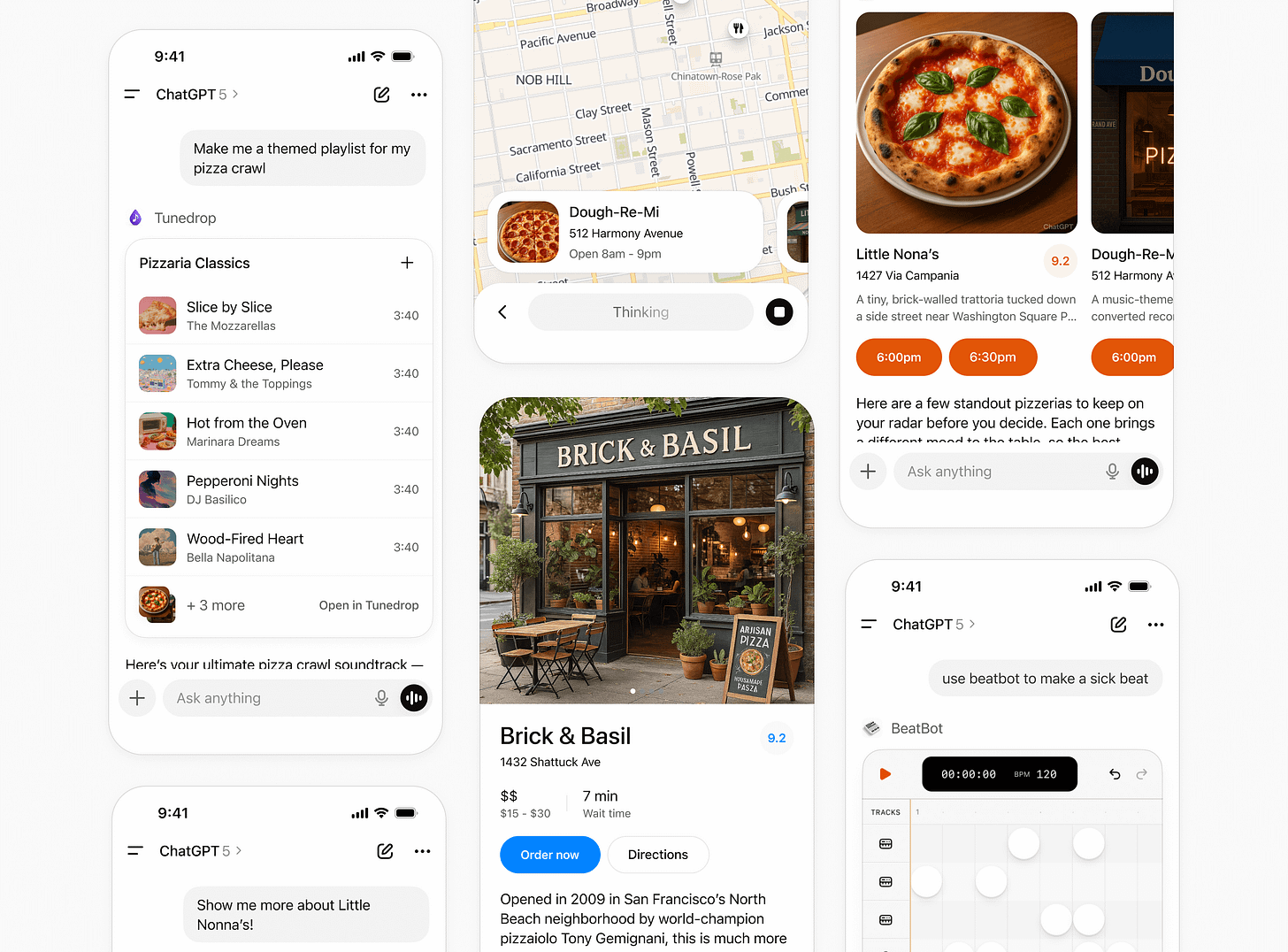
Well, wait a second:
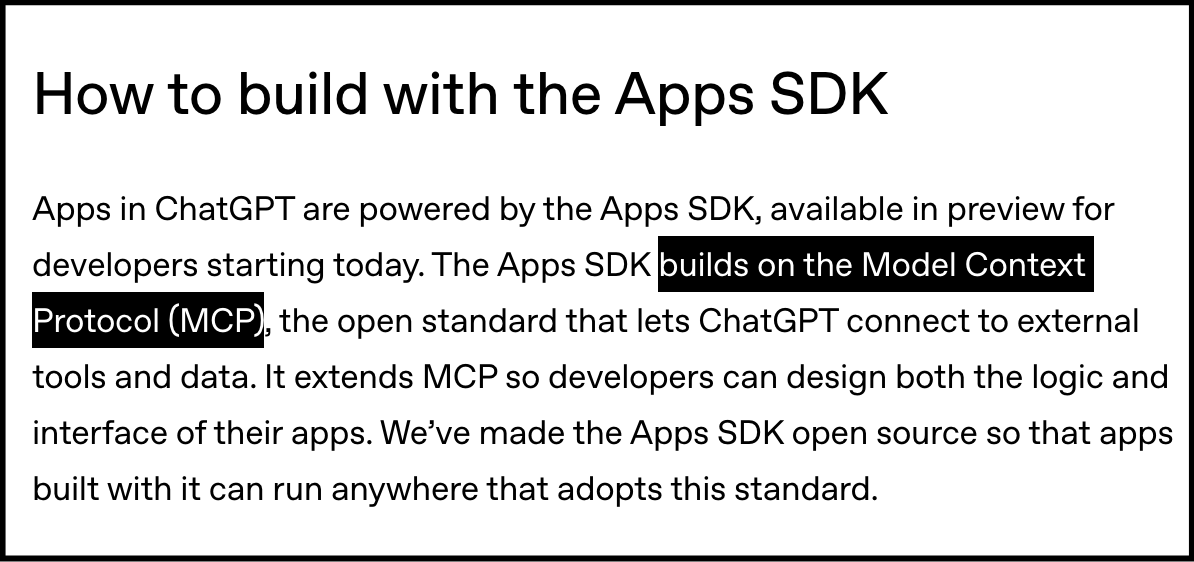
Apps are just an extension of MCP!
If you look at the developer documentation, OpenAI uses the two terms interchangeably:
This is really just a rebrand, plus some standardization for how MCP servers return visual components (via embedded resources).
Nothing about OpenAI Apps is groundbreaking from a technical perspective, but everything about the marketing is.
Why “Apps” Change the Opportunity
Naming matters. MCP Servers have been through a few names:
MCP Server doesn’t mean anything to anyone.
Extensions sounds like Chrome Extensions; a fun learn-to-code activity and a profitable side project, but small dollars.
Connectors sounds like integrations - useful, but not products in their own right.
Apps, on the other hand? Apps are the backbone of modern software. The term evokes B2B SaaS, iOS, and billion-dollar opportunities (the iOS app store does $400B in revenue each year).
By reframing MCP servers as “Apps,” OpenAI is doing something strategic. It’s positioning ChatGPT as the new app distribution platform and sending a clear message: If you want to build the future (and get paid), build here.
ChatGPT Apps: Key Takeaways
With that in mind, I found it interesting to read through the OpenAI Apps SDK documentation and see how they’re envisioning the future for Apps:
Intended App Use Cases
ChatGPT defines “good” app use cases as time-bound, action-oriented tasks that fit naturally into a conversation. This is a very narrow definition.
For example, some of the most lucrative iOS apps are games, but Candy Crush is neither time-bound nor action-oriented.
It’s a practical start, focused on quick transactions and clear outputs, but also limiting. The longer and more emotional relationship is either reserved for ChatGPT itself, or requires users to click out.
Timing & Review Process
Developers can build and test now, but can’t yet submit to the App Store. That creates urgency; everyone’s racing to be ready for an unknown deadline.
There’s also quite a bit of opacity. While ChatGPT offers extensive design guidelines and hints that the review process may mirror Apple’s (e.g. reviewers will need to be provided with app logins with full feature access, similar to what Apple requires for iOS apps), the specifics remain a mystery for now.
Interoperability
Because ChatGPT Apps are built on the Model Context Protocol, and the technology is open source, I think it’s fair to expect that the industry will standardize on this format.
Apps built for ChatGPT will likely eventually be portable to Gemini or Claude, similar to how mobile apps built in React Native or Swift work on both iOS or Android.
App Discovery
Users can directly ‘tag’ apps (“Spotify, change the song”), but OpenAI also supports organic discovery, where ChatGPT chooses tools based on intent.
That means metadata and branding will matter more than ever.
Developers will likely be able to pay for visibility, too. Here’s a quote from the developer guidelines that hints at featured placement:
To qualify for enhanced distribution opportunities—such as merchandising in the directory or proactive suggestions in conversations—apps must also meet the higher standards in our design guidelines.
App Optimization
Interestingly, OpenAI’s docs dedicate an entire section to App Metadata Optimization. Developers are encouraged to write clear, actionable tool descriptions so the LLM knows when to invoke them.
One critique of MCP servers has been that the LLM gets ‘overwhelmed’ when there are lots of tools available, and performance degrades. In the future, we can imagine that users might have 10’s or 100’s of Apps, so carefully written tool descriptions are critical to making sure the LLM can wield those Apps effectively.
Teams will need to test, tweak, and measure how well their app gets picked up by the model. Marketers, take notice.
Monetization
While the specifics of what App monetization are unclear (OpenAI’s documentation more or less says ‘stay tuned’), the new released Agentic Commerce Protocol (ACP) (which I wrote about last week) will be a key enabler.
This solves one of MCP’s biggest downsides. Since MCP clients didn’t support in-chat payments, users had to click out to buy credits for tool use. This was clunky, and often meant costs were opaque (or worse, that tools would randomly fail due to lack of funds). ACP means you’ll eventually be able to buy, subscribe, and transact directly within ChatGPT - for both physical products and for Apps themselves.
If all goes well, this will help fill in the missing link for developers to turn MCP servers into sustainable businesses.
Implications
For now, the actual OpenAI App experience is… only okay. It suffers from many of the same issues that MCP server users are already familiar with, like failed tool calls and poorly scaled graphics:
But, I’m still very optimistic that we’ll work through the rough edges and that this will prompt another wave of innovation around MCP.
It’s not yet clear how big the App opportunity will be. It could be the next App Store, or it could be the next Alexa Skill Marketplace. But given ChatGPT’s 800M active users, most companies will likely opt to be safe rather than sorry.
It’s a big moment for the MCP ecosystem, and a reminder that sometimes the biggest shifts come not purely from technology, but from how it’s framed.


